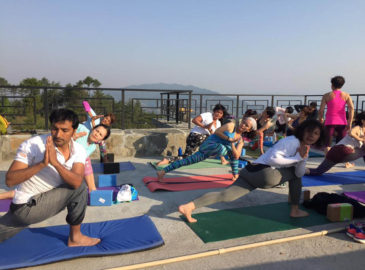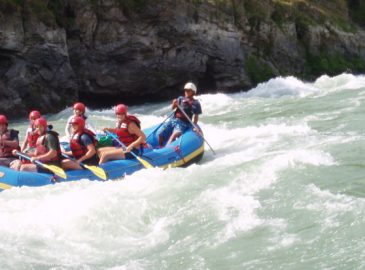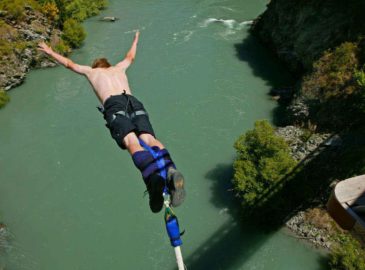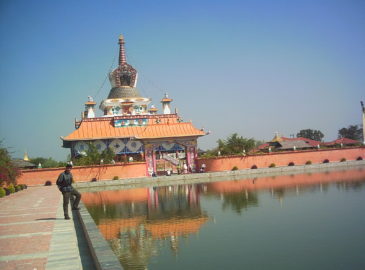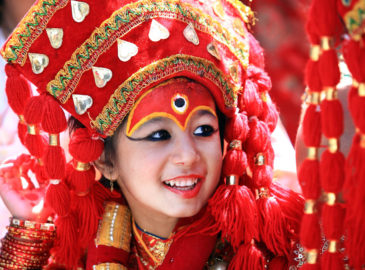Upper Dolpo Trekking
25 Days
D
5400
Apr - Nov
Tour Plan
A big day crossing the Kagmara La (5100m). Taking a packed lunch, follow the Right Bank off the river for a short way until the path becomes slightly obscure below a steep climb. Reaching the top of this, the angle eases off slightly and the pass is no more than an hour and a half away. The pass is marked in the traditional Tibetan way with hundreds of prayer flags, and the view is quite stunning. The short climb to the summit of Kagmara RI (5370m) takes no more than half an hour, but the extra view is well worth it. The mountains of Tibet and Mount Everest in the distance form just part of this impressive panorama, which is dominated by the Dhaulagiri massif and the Annapurnas. The view to the south and west of the Kagmara Lekh and the Kanjiroba Himal is equally impressive. All in all a very special spot. There is no need to leave in a hurry, as the campsite is a mere hour below the pass on a flat grassy clearing by the river (3450m).
On our 1990 reconnaissance trip, Himalayan blue sheep and wild fox ware seen from the camp as well s numerous birds of pray. A big descent, over 1200 meters, leads through an idyllic valley to the village of Pungmo. Camp is made by the Choten the entrance to the village.
A rest day if you wish, but the spare day is to give everyone the chance to visit the important Gompa above Pungmo. There are in fact two Gompas as we have entered a region where both ‘Bon’ and ‘traditional’ Buddhism are practiced. Chotens become very confusing s one dictates an anti- clockwise passing whilst the other clockwise. However, the lams of both Gompas are willing to show you around for a small donation. To reach them, look out for a wooden bridge below the village. Cross this to the opposite bank of the river and follow the path up through the pine forest past a Choten. The path becomes quite exposed as it cuts across a cliff to reach the sanctuary
Today’s destination is the village of Ringmo by the beautiful Phuksumdo Tal (lake). Keeping to the left side of the river, descend for one hour to a military camp (31d50m) at the junction of the Pungmo and Phuksumdo Rivers. Turns left immediately after the camp and follow a delightful path by the Phuksumdo River to a grassy clearing for lunch. The afternoon’s walk up to Ringmo is very rewarding as huge rock walls guard the upper valley and it is not until some prayer flags are reached at 3800m that the lake can be seen. Equally impressive is the huge waterfall falling down from the Phuksumdo River. From the prayer flags, a pleasant half an hour’s walk leads to the village of Ringmo and camp is made on the opposite side of the village (3700m). Crossing the bridge in the village and turn left to reach the lake.
A rest day in Ringmo camped by the beautiful clear waters of Ringmo Lake. The nearby monastery is worth a visit.
The final part of the trek sets out to explore the hidden valley of Tarap, one of the last bastions of Tibetan culture in Nepal. An easy day involving a couple of hours walks in the morning to a Yak grazing pasture by the Manduwa Khola. The path skirts along lodges hacked out of cliffs for the Yak caravans from Dolpo. The views down the Suli Gad and across to the Kagmara Lekh are particularly impressive. The campsite is in a lovely spot (3900m) below Kang Taiga (5916m).
Today is a very strenuous day crossing thee Basic Bhanjyang (Bagar La) (5200m). It is also one of the most fascination of the trek as we cross the watershed of the main Himalayan onto the dry Tibetan plateaus. Following the river to begin with, the path turns north up the first obvious side valley and climbs steeply to the pass, which marked by a choten and the usual prayer flags. The views to the east and north are one of complete contrast to those of the previous two weeks trekking. The mountain is orange and brown stretching out into Tibet to the north. The pass is often windy and the descent is party rapid to the river below and our camp (4650m). The road to shey and saldang is clearly etched out of the landscape by the tracks of thousands of Yaks that have made the journey south over the centuries the lifeline of Dolpo. At this point we are only three hours from the village of Shey, but access is not permitted.
The Tarap Valley is today’s destination and despite the climb to the Numla La (5350m), the walk into this beautiful and wild Tibetan landscape is one of the highlights of the trek. A four to five hour climb leads to the pass and the view is indeed stunning. Dhaulagiri I am the prominent feature, with the rolling Tibetan hills and the Kanjiroba Himal to the west equally impressive. For an excellent 3600 panorama, climb the small peak to the left of the pass. The path descends gradually into the Tarap Valley. In two to three hours the Champa Gompa is passed on the left and camp is made a little further down the valley in the first village (4300m).
A long day. Due to the opens of the Tarap Valley, the sun hits the tent early, giving a spring feel to the morning. The mornings walk passes through the villages off Clumaga and Kakar, both extremely interesting with many Choten, again both Bun-Po (the ancient pre-Buddhistic religion) and Choba (orthodox Buddhist). There are two Gompas in Dho, Guru Bumba (Chob) and above the village Scipcha Gompa (Bon). Leaving Dho (a name given to the last village but actually meaning the upper collection of villages), the Tarap Khola is followed for two hours, at first on its left bank, to a bridge where lunch is taken. This is the last flat ground for three to four hours as the valley becomes narrow with deep goes crossed by innumerable small bridges. However, it is an extremely well made path, one of the finest gorge paths in the Himalayan, offering an entertaining afternoon’s walk. A small campsite by a large campsite by a big cave.
The path through the gorge continues to impress, switching from the riverbank to way up the cliff side on some amazing constructions! After a long morning’s walk (look out for Musk Deer), a large clearing by the river is reached. This is Lahini and marks the end of the gorge. The path Kanigaon (2700m) where we camp.
From the check post, head east for a few hundred yards to a well mad bridge which is crossed to the left bank of the Barbung Khola, into which the Trap Khola now flows. This river is followed for three hours to the village of Tarakot where we stop. Rest afternoon.
Another easy day, continuing along the Barbung Khola through a beautiful alpine valley to the Hindu village of Dunai. Four hours walking. Camp by the new ‘Blue Sheep lodge’.
The final day’s walk continues along the river to a tea shop by the side of the path (One and a half hours) which marks the start of the climb to the Juphal airstrip. The path climbs steadily, passing through the village of Juphal to the airstrip. Camp is made outside the RNAC office.
We take the flight to Nepalgunj, for an afternoon’s rest before flying on to Kathmandu the following day. The views from the lake of the Annapurnas are famous throughout Nepal.
Additional Information
Additional info
The Trail Conditions:
Straight, Uphill, Downhill, Jig Jag with small rocky, pebbles, somewhere flat man made stone steps, through the rhododendron, moss covered forests, suspensions metal bridges
Medication
- Bandage for sprains
- Plasters/Band-aids
- Iodine or water filter (optional)
- Moleskin/Second skin – for blisters
- Antiseptic ointment for cuts
- Anti-bacterial throat lozenges (with antiseptic)
- Aspirin/paracetamol – general painkiller
- Oral dehydration salts
- Broad-spectrum antibiotic (norfloxacin or ciprofloxin)
- Anti-diarrhea medication (antibiotic)
- Diarrhea stopper (Imodium – optional)
- Antibiotic for Giardia or similar microbe or bacteria
- Diamox (altitude sickness – can be bought in Kathmandu)
Clothing / Equipment List
Kindly bring the following list of clothing / equipment for our trek to Upper Dolpo Trek
- Pair trekking boots and waterproofing agent
- Pair lightweight trekking sandals
- Pairs thin walking socks
- Pairs lightweight wind – water proof pants
- T-shirts
- Fleece Jacket
- Set lightweight thermals
- North Face down Jacket (Preferably)
- Small thin towel (sports towel best)
- Soap
- Shampoo
- Sunscreen
- Extra lightweight shirt for daypacks – for stops along the way
- Hat
- Cotton or silk bag liner – optional
- Neck warmer
- Pairs ‘thinners’ gloves
- Rucksack
- Pack tissues
- Pair sunglasses
- Water filter / Iodine (you could buy boiled water in hotels/ lodges which is safe to drink.
- Camera and films
- Head torch and spare batteries
- Sleeping bag (rated -15(above) deg C during our trek)
Above things are required for Upper Dolpo trek. However if you do not have clothing you can either buy or rent in Nepal. In this case we have equipment cheaper than your country.
Recent Post
-
Langtang Valley Trekking
Duration: 08 days
Popular Trekking
-
Everest Panorama Trekking
Duration: 8 days
-
Gokyo Lake Trekking
Duration: 12 days
-
Everest Base Camp Trekking
Duration: 14 days
-
Jomsom Muktinath Trekking
Duration: 14 days
Extend My Holidays
If you like to extend your holidays in Nepal with your short time to experience the high mountains and Nepalese culture you can choose these short and easy extensions trips. Also for those who are inexperience in walking up and down on the mountain the following options are the best to choose. Click on the link below to get its information.














